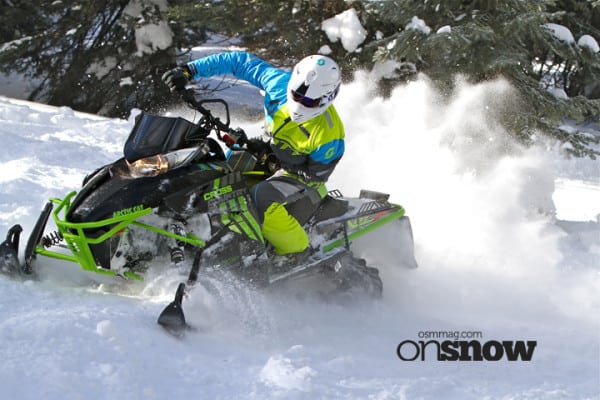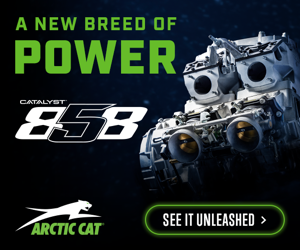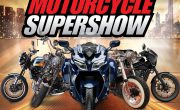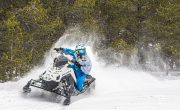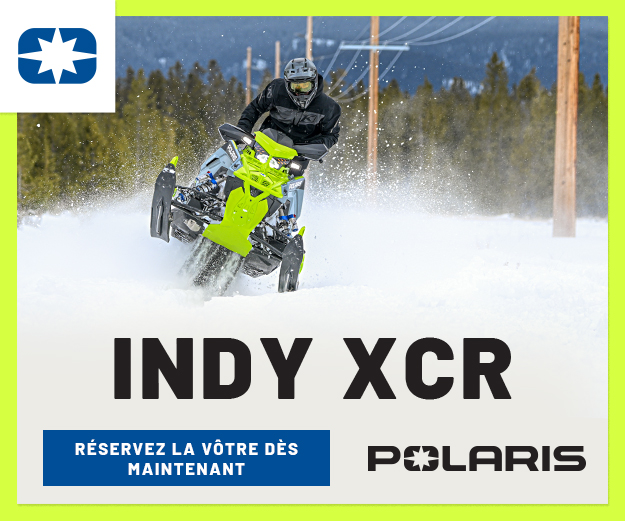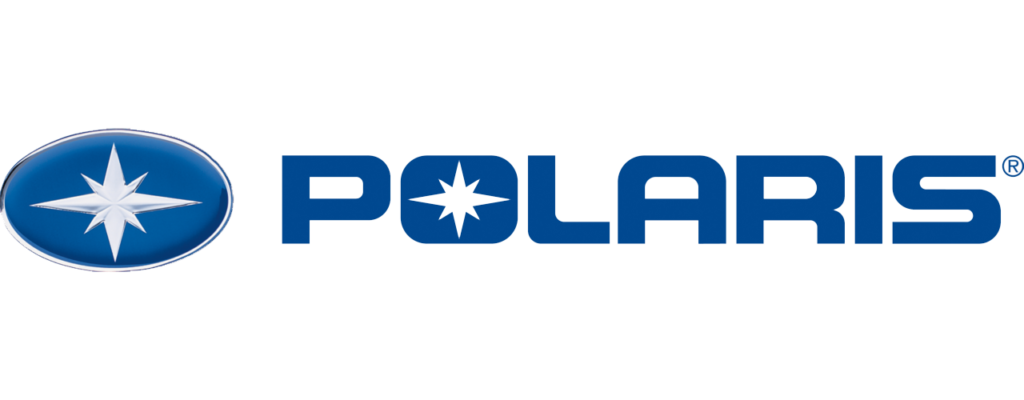There’s a transformation of sorts taking place just under the radar at Arctic Cat that has to be felt to be truly appreciated it. Year-over-year since the introduction of the much sleeker and clearly more performance oriented ProCross and ProClimb platforms, Cat has been intently focused on engineering snowmobiles that not only perform at or near the top of their respective classes, but perhaps more importantly have created a mindset with riders outside the fiercely loyal fold of Cat fanatics that has many past owners and current competitive riders considering the iconic brand for their next new sled purchase. The kids who huck big booters in the backcountry call this progression, and for 2017 Arctic Cat has progressed their line-up of sleds even further with a thunderous return that includes new models at both the top and bottom of the line; further weight reductions in the competitive mountain ranks; and a host of subtle but impactful improvements that left our crew with a level of appreciation for the latest black and green machines not felt since the brand wowed us with the venerable ZR platform during the 1990s.
Whether it’s a by-product of the new direction being charted by a fresh upper management team or nothing more than a result of the passion and pride exhibited by their hardworking engineering and development crews, the swagger is back at Arctic Cat.
When news of the Arctic Cat relationship with Yamaha first surfaced many riders on both sides of the ledger wondered aloud what it meant for the future of their brand. The obvious advantages of Arctic Cat gaining a stronger four-stroke engine option were quickly realized, but the future beyond that seemed a bit cloudy. In many ways the new 2017 line-up is demonstrating just how powerful this relationship can be, both in terms of pure power with the new 998cc turbocharged, 180-horsepower engine, and also in regard to continuous improvements in quality that is transforming a brand that was once maligned with nagging quality issues to one of assured confidence.

The RR remains the big bump banger for Arctic Cat in 2017 but the move to coil-over FOX Quick Switch 3 shocks with rebound control makes the sled easier to tune for conditions and allows you to easily choose between hard charging race-inspired damping or trail comfort. All four shocks feature Kashima coating for improved durability and reduced stiction.
After returning from two late winter ride evaluations aboard the 2017 Arctic Cat models we were left thinking this is clearly a different brand of snowmobiles from what we we’ve accustomed to. In fact, after our second go around with the sleds during the annual spring Snow Shoot evaluations and photography session in West Yellowstone, Montana, it was Arctic Cat who delivered the most consistent ride quality and handling characteristics over any other brand when viewed from top to bottom. No matter the sled grouping or category, our riders pointed to Arctic Cat as the one sled to consistently perform with predictability and comfort…a bold statement and no small feat given today’s broad swath of models.
Thunderous Return – Clearly the biggest news for Arctic Cat in 2017, at least in terms of market noise, is the new 9000-Series turbo-charged Yamaha engine. The silky smooth triple is packed, and we mean packed with technology and of course horsepower. Just how much real-world horsepower is in fact up for debate with both Arctic Cat’s and Yamaha’s marketing teams providing us with the nicely rounded 180-pony numbers and early third party reports releasing internet chat rumors of a power numbers of even greater grunt. This much we know for certain, the motor is a bonafide rocket ship, delivering a smooth and linear thrust that is nothing short of shocking for a production snowmobile. While the statement of arm-stretching acceleration is overly used, this is one instance where the performance matches the bravado…this power package is tendon lengthening, finger tip ripping, burst of raw yet refined power that we have never experienced in our 25-plus years of snowmobile evaluations.

After blistering the open stretches of trail with the T-Cat we had our doubts on the powerful sled’s ability to satisfy on a more twisted or bump riddled stretch of trail. While it will never be as nimble as a lightweight ZR two-stroke model, we came away impressed with just how easy it was to navigate 180-ponies down a tight trail. The power comes on smooth and predictable and is quite happy running at 50-mph all-day long. Unlike the hyper sleds of the late 90s and early 2000s, the new Thundercat is incredibly docile when it needs to be; yet with one subtle squeeze the beast will open up an untouchable can of whoop-ass.
Of course building raw power is relatively easy, especially if other characteristics of run quality, smoothness, predictability, and in the case of turbo-boosted power is void of dreaded turbo lag are cast to the wayside. However with the 9000 series engineers from both Yamaha and Arctic Cat have gone to great lengths to ensure the motor package is not only stupid fast, but is also remarkably trail friendly to the point even your mother-in-law could ride it and still call you a nice young gentleman.
Big turbo power is nothing new for Arctic Cat. Their boosted V-Twin Suzuki engine has been delivering similar big numbers for several seasons. However, the new Genesis motor is vastly more refined and 10-pounds lighter than the Suzuki. Where the 1100 turbo was a motor built primarily the go-fast crowd, the new 9000 series is a snowmobile that feels just as much at home on the trail at 50-mph as it does when it easily eclipses the century mark…and is still pulling on the open lake bed.
Underneath the in-your-face brashness, power and speed of the 9000 series engine, and the subtler but vastly improved ride and performance enhancements across the line, Arctic Cat has quietly gained a level of quality and reliability that is frankly surprising. Our experience with Arctic Cat models over the past two winters has been one of rip it, ride it and forget about it, and based upon our early experience with the 2017 models, it’s more of the same only better for next season.

The popular El Tigre’ ride package returns and touts the same add-ons as the Limited package such as QS3 chocks, mid-height windshield, rear storage bag, goggle holder, curve Sno Pro brake lever and ProCross bumper in the iconic El Tigre’ green striped motif.
Lighter and Righter – These days much of the engineering focus at the OEM level has been focused on the mountain segment. With consistent snowfall and a movement across the snowbelt of riders looking for longer and more adept off-trail sleds, the mountain segment has been the big mover in terms of development and sales for all the brands. Last season Arctic Cat took several steps towards improving their M-Series sleds with the introduction of both a new front and rear suspension system that shed weight and improved off-trail handling. For 2017 that progression continues with a new Mountain Cat package that sheds further weight and incorporates key changes to further hone the stretched Cat’s ability to carve powder and boondock the backcountry.
With the introduction of new handlebars, suspension rails, intake plenum, muffler and exhaust pipe, reengineered tunnel and lightweight engine plate, the new Mountain Cat sheds nearly 6-additional pounds from the overall package. While this may not sound like much, those refinements in addition to performance enhancements including narrower and shorter running boards, further forward positioning of the driver on the footrest, and a dropped driveshaft for improved approach angle has enriched the deep snow characteristics of the new Mountain Cat series more than we bargained for. When our group of western young guns returned from a day of backcountry riding with all four brands we fully expected the conversation to focus on the all-new Ski-Doo platform and stretched Pro-RMK models. Instead, much to everyone’s surprise including their own, the post-ride banter revolved around the Mountain Cat.

In our opinion the XF High Country Limited is one of the best-looking sleds for Arctic Cat for 2017. The backcountry focused sled touts all the subtle changes found across the line for Cat next season and features 141-inch length track with 2.25” lugs mated to the mountain focused AMS front suspension in a narrowed stance. New to the fold for next winter will be a longer 153” High Country in the 8000 power series.
Air Be Gone and More – Arctic Cat was the first manufacturer to incorporate the use of lightweight air-shock technology into their line more than 10 years ago. While the benefits of air-shocks will likely always remain a part of the mountain segment, at least in the near future, much of the remainder of the Cat lineup has made a dramatic shift away from air-springs and has returned to the tried and true coil-over design. The reasons for this are two-fold. First the ride quality of coil-springs, especially when it comes on trail comfort, is simply better. Secondly, continued improvements in shock technology in harmony with the new easy to adjust FOX Quick Switch 3 shock package gives riders the opportunity to tune their ride easily and effectively. The QS3 range of compression adjustment is the kind that most riders, no matter how well tuned their bottom side is, can feel and allows them to choose from soft and supple to firm and controlled in just seconds.
The spreading of the QS3 technology is not the only big change when it comes to shocks for 2017. Another iteration of the shock aptly dubbed the QS3R will take up residence on ZR RR models at the rear arm and front ski-suspension and brings with it rebound control as well.

Another small change producing big results within the Arctic Cat line for 2017 is a revised take on the still relatively new Team Rapid Response drive and driven clutch system. Dubbed version two, the new system features a bushing on the shaft of the drive clutch which in turn allows the secondary to retain minimal belt deflection at all times. This creates not only consistent performance and an effective lower drive-away ratio, but eliminates the need to adjust belt deflection thereby ensuring maximum drive belt performance and less chance for premature belt wear. The idea is simple and ironically was employed during the early days of snowmobile development, when adjustable secondary systems were non-existent. This is one idea that is sure to be spread throughout the Arctic Cat line in future years.
Adding to the suspension refinements, most if not all 2017 Arctic Cat models will benefit from a host of upgrades that may seem subtle on paper but serve up tangible results from the saddle. First and foremost is the move to a new handlebar grip on all models. The thinner grip material results in a 3.7mm smaller outer diameter grip. While it doesn’t sound like much, it’s a change you will instantly feel from the moment you grab the bars. The smaller bar just feels right in your palm and the softer material serves up better grip and transfers heat better than the grips of old.
Joining this across the line-improvement is another small change to the headlight reflector on all halogen bulb models (basically every models save the LED beamed 9000 series sleds). The new beam pattern brings the relationship between low beam and high beam closer in line and in short delivers a more effective high-beam pattern than the previous “shoot for the trees” pattern of old.

The new top cowl and side panels found on the new turbo models and limited edition Skime ZR is more than just looks. The new side panels vastly eases the task of removal and reinstallation thanks to an entirely new design and half-turn slotted fasteners. What’s more, the new panels deliver greatly improved fit and finish.
Not to be left out, the crew at Cat also gave the gang at the bottom of the food chain something to cheer about. Available last winter in only Bearcat and Touring trim, the 700cc twin 4-stroker will now have a home in a ZR 3000 LXR model. Joining it up the chain of command is a ZR 5000 LXR in 137-inch track length, replacing the 129-incher; and the ZR 4000 Sno Pro will replace the RR race bred buggy and will now feature push button reverse. Rumors of a “de-tune” kit for the racer only 6000R SX and 6000R XC snocross and cross-country sleds, is being developed by Arctic Cat to satisfy the void left by the cutting of the 4000 RR model.
Editors Note: For more photos, captions and details on the new 2017 Arctic Cat snowmobiles, check out our Spring issue of On Snow Magazine hitting newstands and mailboxes at the end of March.




